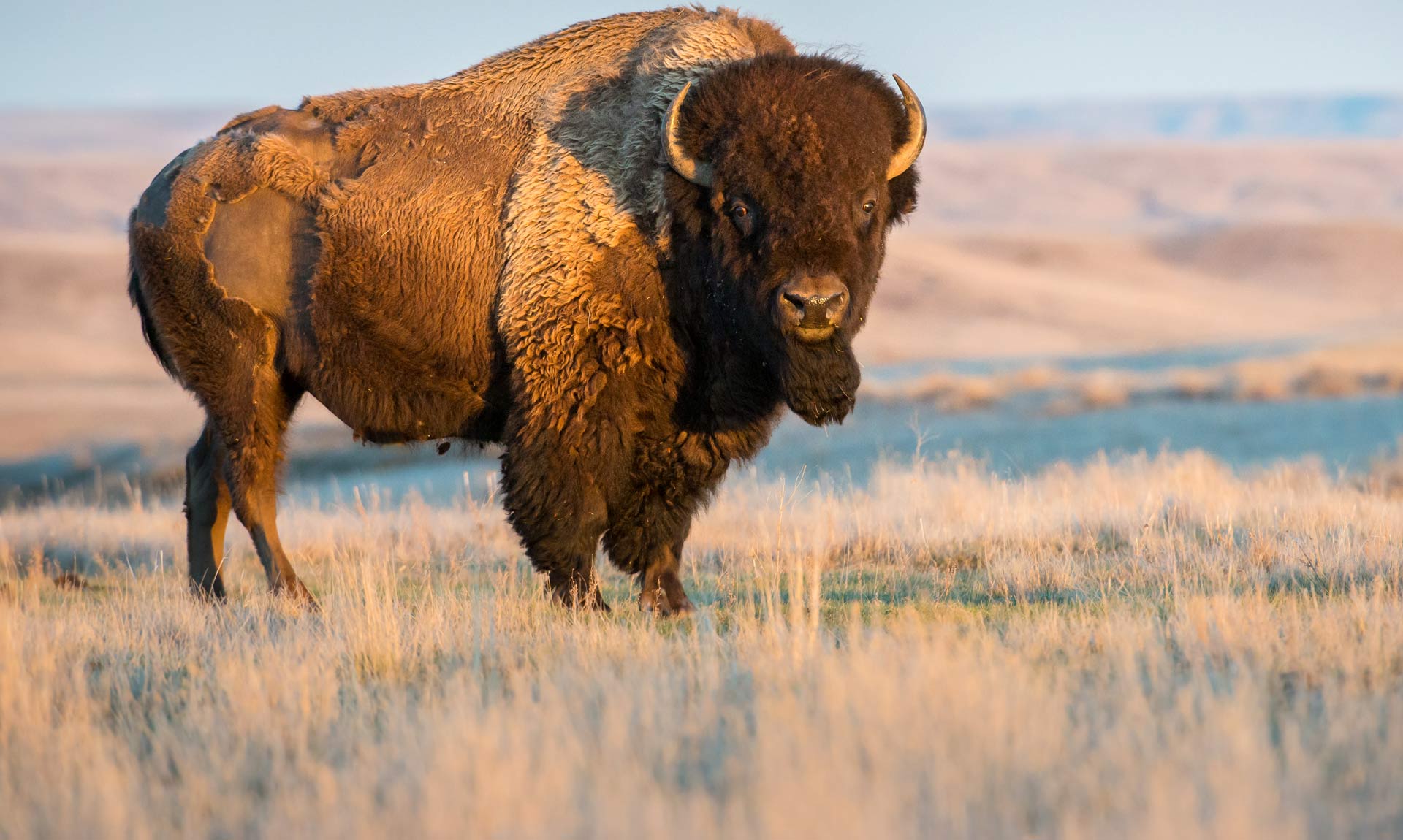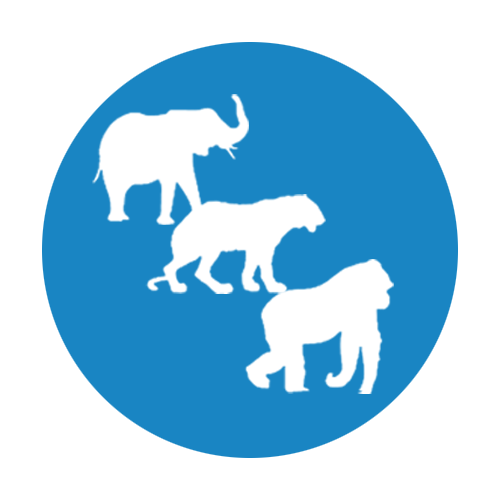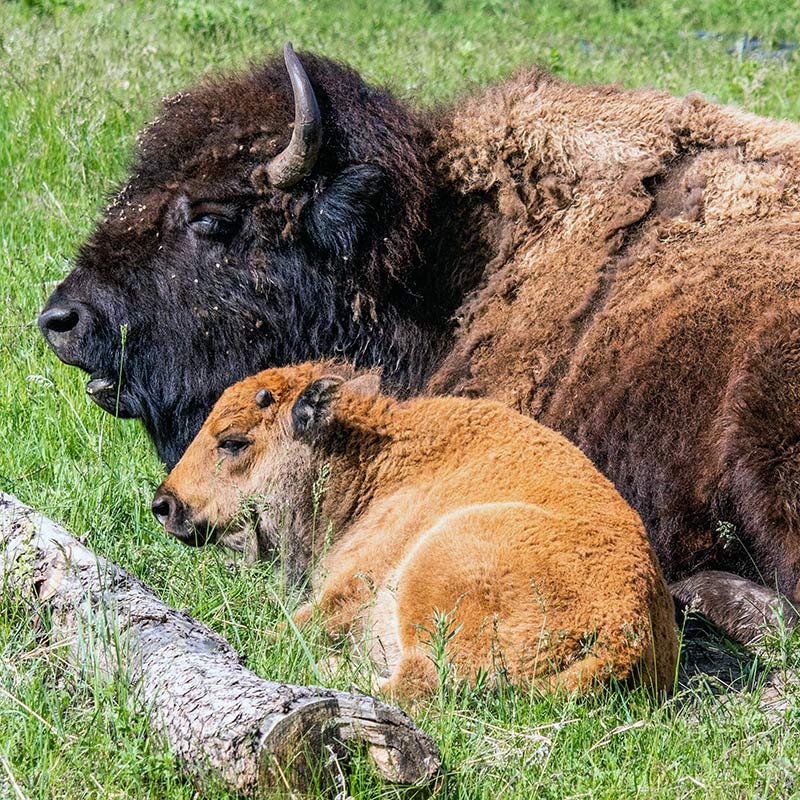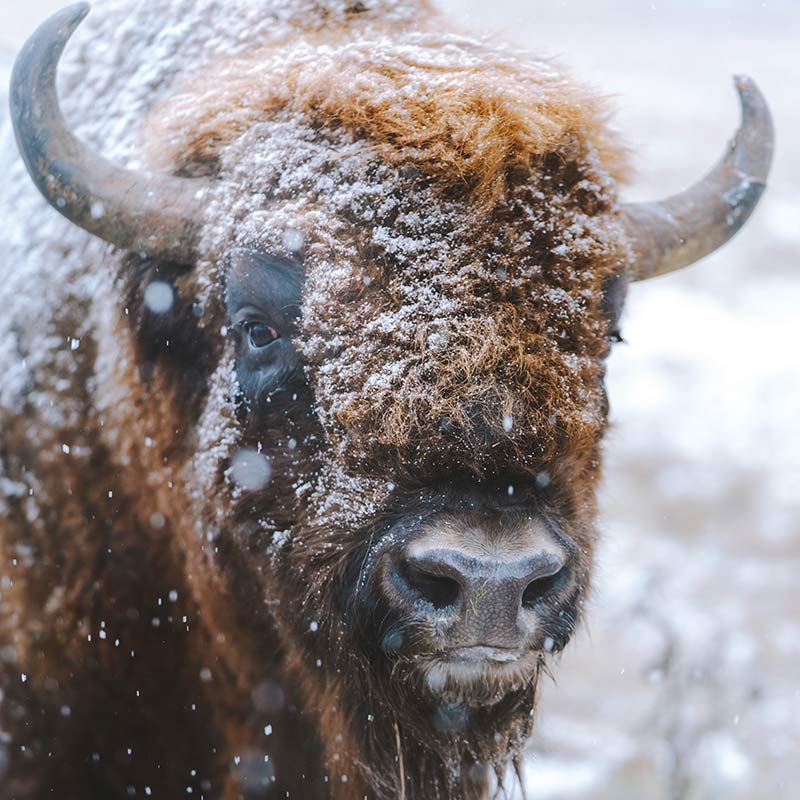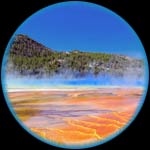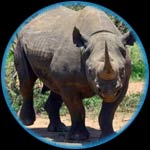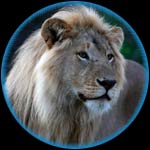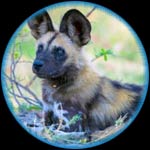AMERICAN BISON LEFT

BETWEEN 11,000 – 13,000 REMAIN
 TWO CENTURIES AGO BISON ONCE ROAMED NORTH AMERICA IN THE MILLIONS. BY 1902 THEIR NUMBERS HAD DROPPED TO 723
TWO CENTURIES AGO BISON ONCE ROAMED NORTH AMERICA IN THE MILLIONS. BY 1902 THEIR NUMBERS HAD DROPPED TO 723
 STRONGHOLDS: YELLOWSTONE NATIONAL PARK AND WOOD BUFFALO NATIONAL PARK
STRONGHOLDS: YELLOWSTONE NATIONAL PARK AND WOOD BUFFALO NATIONAL PARK
 THE AMERICAN BISON IS CLASSIFIED AS NEAR THREATENED ON THE IUCN RED LIST
THE AMERICAN BISON IS CLASSIFIED AS NEAR THREATENED ON THE IUCN RED LIST
AMERICAN BISON FACTS
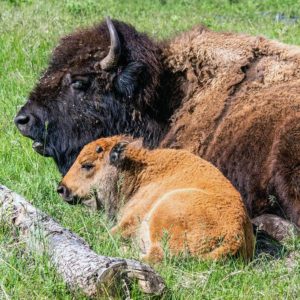 The American Bison is the largest mammal in North America. It once roamed the continent in enormous herds and helped shape the history of the United States. Several American coins depict this species. Most famous of these is on the reverse side of the “buffalo nickel” minted from 1913 to 1938. It is imposing in stature, with its massive body highlighted by an immense shoulder hump. Their large head features a broad forehead, up-curving horns and a beard. The head, neck, shoulders, and forelegs are covered in a long, shaggy, brownish-black coat, while the hair on the remainder of the body is shorter and lighter in color.
The American Bison is the largest mammal in North America. It once roamed the continent in enormous herds and helped shape the history of the United States. Several American coins depict this species. Most famous of these is on the reverse side of the “buffalo nickel” minted from 1913 to 1938. It is imposing in stature, with its massive body highlighted by an immense shoulder hump. Their large head features a broad forehead, up-curving horns and a beard. The head, neck, shoulders, and forelegs are covered in a long, shaggy, brownish-black coat, while the hair on the remainder of the body is shorter and lighter in color.
Grasses, herbs and sedges are the main diet of the American Bison. They will also eat flowering plants, plant leaves and even fungus and algae when other staples are unavailable. During the winter, they dig through deep snow to access vegetation. At one time, the plains American Bison seasonally migrated over the same migratory routes, hundreds of miles in length. Today, they have become less migratory but free-roaming herds will relocate according to the weather and availability of food.
Social Interaction
Adult females live with their young in hierarchical herds, led by a dominant matriarch. Adult males usually roam alone, or in small bachelor groups. Males will attempt to join the herd, but may enter into fierce battle with other males for right to mate. Mating season is between June and September. Following a gestation period of approximately 285 days, the female (cow) will usually give birth to a single calf. Calves are able to walk and run within 3 hours, but are closely guarded by females. Females will charge intruders when necessary. Calves are weaned before they are 1 year old and reach adulthood at 2 to 3 years of age.
AMERICAN BISON HABITATS
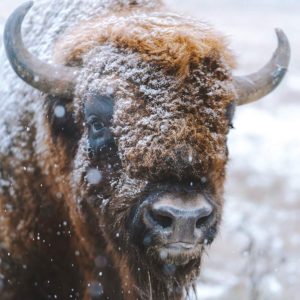 American Bison once roamed from Alaska to northern Mexico in the west. In the east, their range extended nearly to the Atlantic Ocean, from New York to Florida. There were sightings in North Carolina near Buffalo Ford, on the Catawba River, as recent as 1750. Today, free-roaming bison herds remain on less than 1 percent of their former range. They are restricted to small wildlife areas and a few national parks, such as Yellowstone and Wood Buffalo National Parks.
American Bison once roamed from Alaska to northern Mexico in the west. In the east, their range extended nearly to the Atlantic Ocean, from New York to Florida. There were sightings in North Carolina near Buffalo Ford, on the Catawba River, as recent as 1750. Today, free-roaming bison herds remain on less than 1 percent of their former range. They are restricted to small wildlife areas and a few national parks, such as Yellowstone and Wood Buffalo National Parks.
AMERICAN BISON THREATS

As recently as 200 years ago, North America was home to approximately 40 million American Bison. They provided a sustainable source of food, as well as hides for shelter and clothing, for many Native Americans. Sadly, overhunting during the westward expansion in the 19th century resulted in a severe decline in the American Bison population. By the late 1800s, they were nearly extinct, with only about 1,000 individuals remaining in the wild or captivity.
Recognizing the potential loss of this iconic American species, conservation efforts were put into place. Since then the American Bison population has risen to around 500,000 today. However, 90 percent are captive stocks managed for commercial purposes. Only a small fraction of American Bison lives in free-ranging herds. Therefore, the impression that the species is protected in the wild is mistaken. Numerous threats are still putting pressure on both the captive and wild populations. These threats include habitat loss, reduction in genetic diversity and crossbreeding with domestic cattle.


